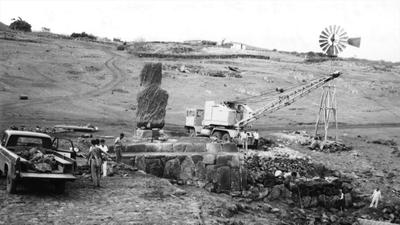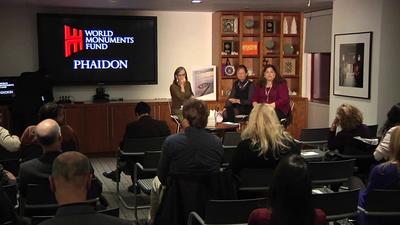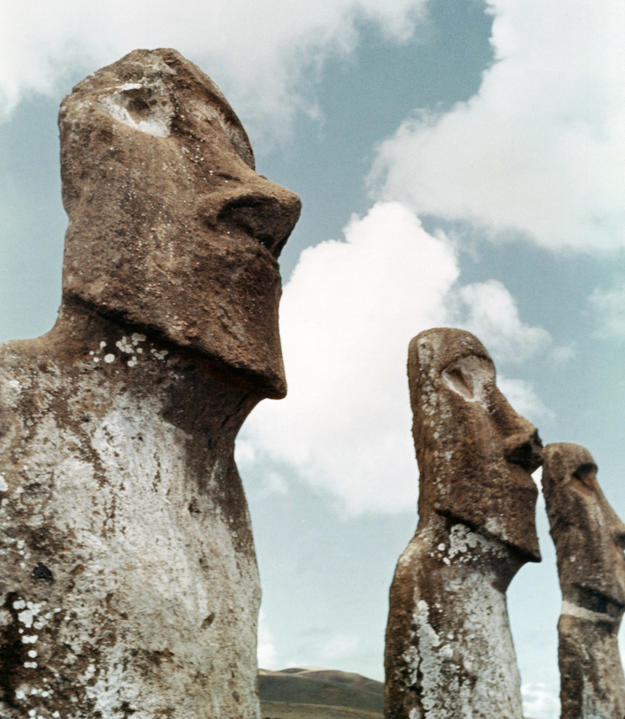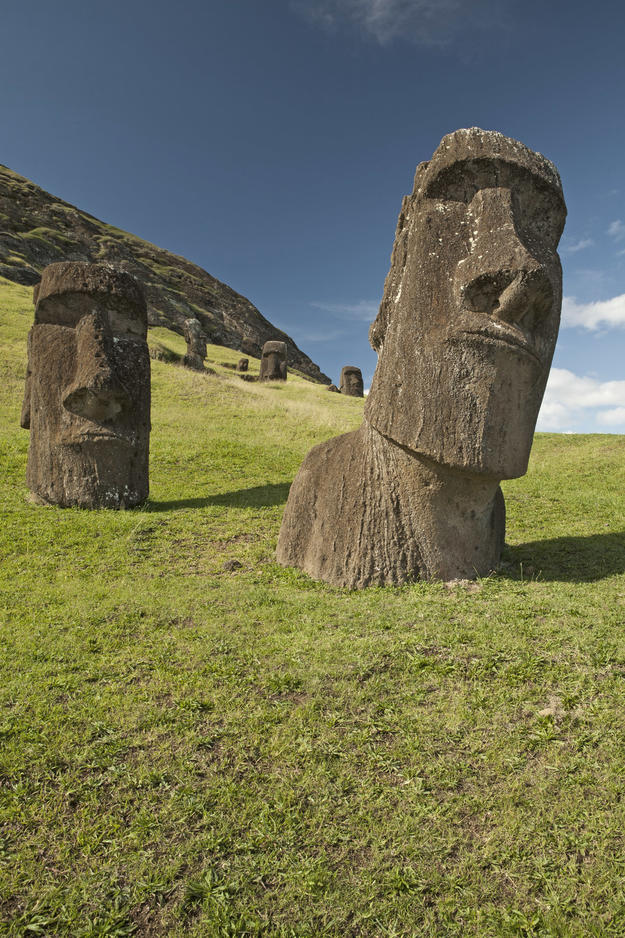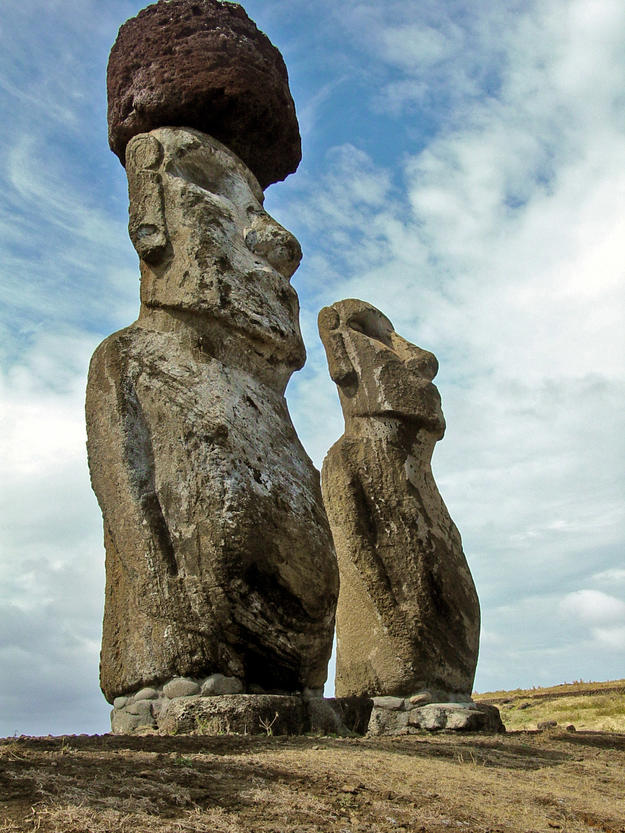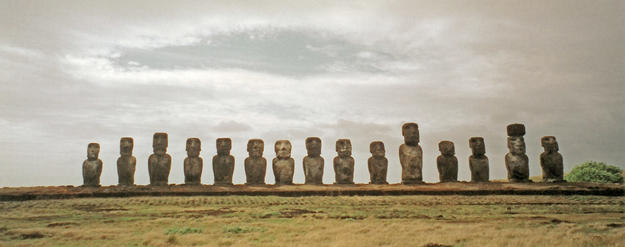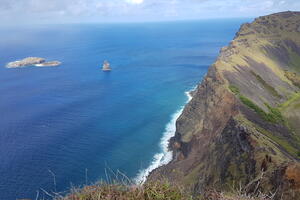Easter Island (Rapa Nui)—Moai Conservation Project
Background
A Polynesian volcanic island in the Pacific Ocean, at the southeastern most point of the Polynesian triangle, Easter Island—known locally as Rapa Nui—is a special territory of Chile that was annexed in 1888. It is most famous for the hundreds of extant large carved monolithic statues, known as moai, that were created to represent ancestors by the Rapa Nui people from approximately the ninth to the seventeenth centuries. Much of the island is protected within Rapa Nui National Park, a UNESCO World Heritage site that is managed by CONAF (Corporación Nacional Forestal de Chile), the organization responsible for the management, administration, and conservation of Chile’s national parks.
How We Helped
WMF’s interest in protecting the archaeological heritage of Easter Island began in the late 1960s after Dr. William Mulloy, Professor of Anthropology at the University of Wyoming, and Dr. Gonzalo Figueroa of the University of Chile prepared a conservation report on Easter Island’s archaeological sites for UNESCO. In 1967, WMF and the Chilean government created the Easter Island Committee to restore two ahu (stone altars) in the Tahai region and conduct topographical mapping system surveys across the island. In 1968, one of the island’s moai was put on view in New York, Washington D.C., and other cities, accompanied by an exhibit featuring Easter Island artifacts to increase public awareness of the remote Island, its heritage, and its conservation needs. Beginning in 1973, WMF funded five years of archaeological research and survey, headed by Dr. Mulloy that included conservation work at Ahu Vai Uri, Ahu Huri a Urenga, two ahu at Hanga Kio’e, and the ceremonial village of Orongo. In the 1980s, Dr. Elena Charola, a conservation scientist from the University of Pennsylvania led a campaign of archaeological study at the Ana Kai Tangata cave, that was used to develop an archaeological management plan and on-site park ranger training courses on conservation and management techniques. Over the years, WMF has sponsored several research and advocacy campaigns, symposia, and round-table discussions for the study and preservation of this magnificent heritage, resulting in publications such as Easter Island: The Heritage and its Conservation and Death of a Moai. In more recent years, WMF helped support conservation and site-management field projects at Rano Raraku and Orongo, two distinguished archaeological sites in the Rapa Nui National Park.
Why It Matters
Easter Island’s unique archaeological legacy is of exceptional importance to humankind. Much of what survives on the island has not been completely explored or interpreted. For over fifty years, WMF has played a substantial role in the conservation of the island’s heritage, in an integrated approach that considers the cultural, natural, and human aspects of preservation. WMF’s longstanding commitment to research, protection, and advocacy helps safeguard Easter Island’s extraordinary heritage for future generations.
Support Our Work at Rapa Nui
Our work continues today thanks to the help of individuals like you. Use the link below to direct your gift to WMF’s next stage of work at this irreplaceable site of shared heritage.

Videos
